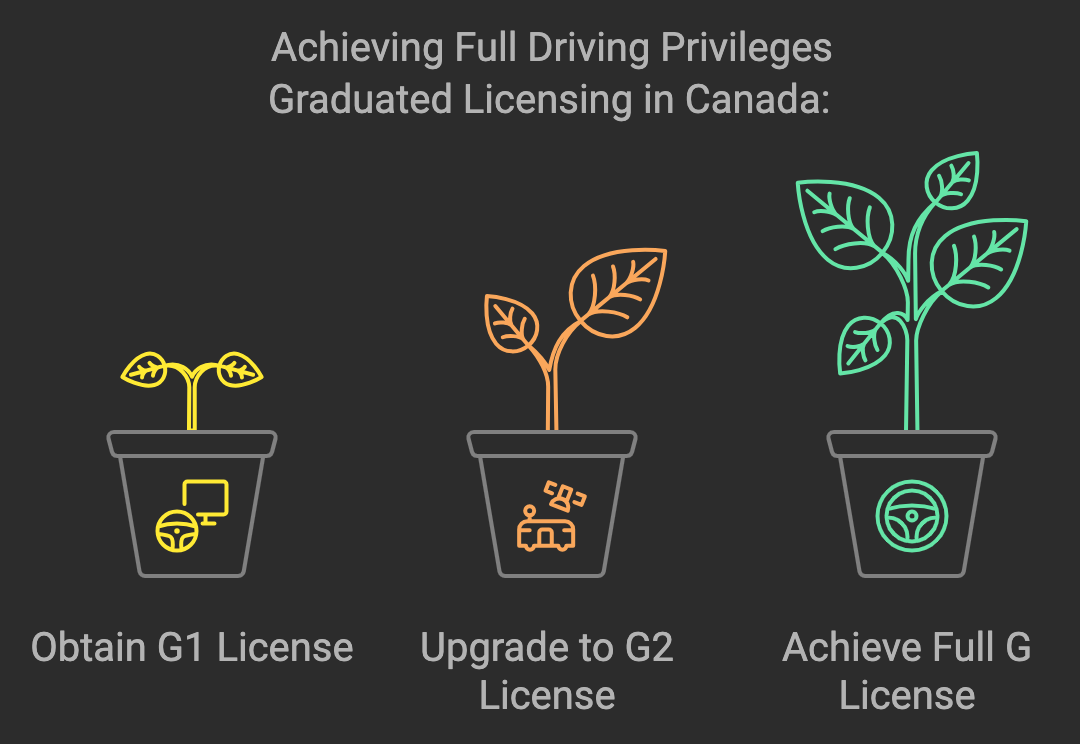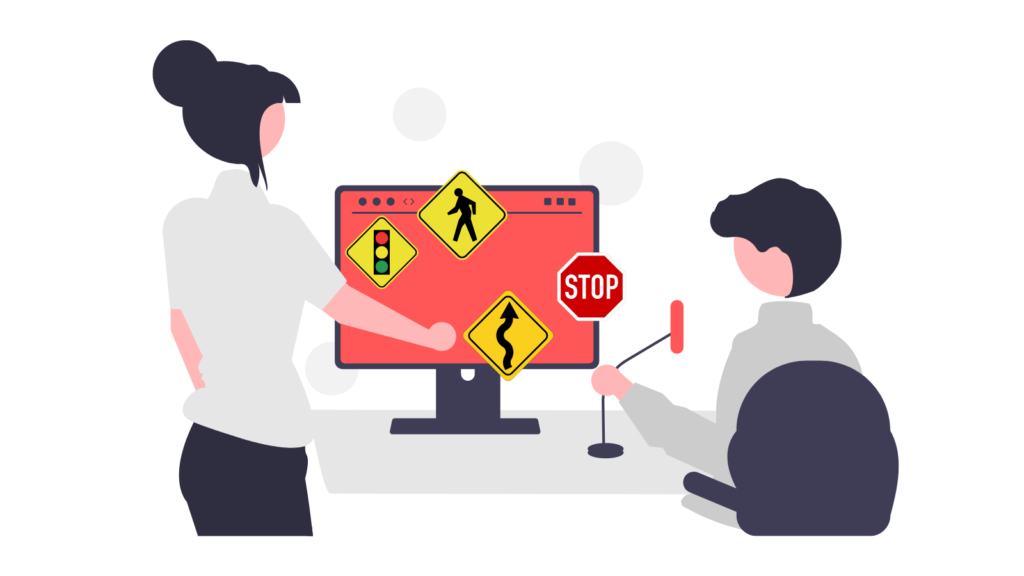Graduated Licensing in Canada: A Step-by-Step Guide
The Canadian graduated licensing program is a multi-stage process designed to help new drivers gain experience and develop safe driving habits. Here’s a breakdown of the program:
Stage 1: G1 License
- To obtain a G1 license, you must pass an eye test, a knowledge test, and a vision test.
- The G1 license is valid for up to five years.
- G1 drivers must always have a fully licensed driver in the passenger seat while driving.
- Mandatory requirements for G1 drivers include:
- Completing an entry-level training course covering defensive driving, rules of the road, and emergency maneuvers.
- Maintaining a zero blood-alcohol level.
- No use of hand-held devices while driving.
Stage 2: G2 License
- After holding a G1 license for at least 12 months, you can take the test to upgrade to a G2 license.
- With a G2 license, you can drive alone but with some restrictions.
- Restrictions for G2 drivers include:
- Maintaining a zero blood-alcohol level.
- No use of hand-held devices while driving.
- No driving on high-speed expressways.
- No more than one passenger under the age of 19 in the vehicle.
Stage 3: Full G License
- After holding a G2 license for a minimum of 12 months, you can take a road test to obtain a full G license.
- Passing the road test grants you full driving privileges with no restrictions, including driving on any road or highway.
Benefits of Graduated Licensing in Canada
- Graduated licensing programs have been shown to reduce accidents involving new drivers.
- The staged approach allows new drivers to gain experience and confidence over time, leading to safer and more responsible driving habits.
Driving is a privilege, not a right. The graduated licensing program in Canada ensures that new drivers are well-prepared to handle the responsibilities of driving on public roads.


